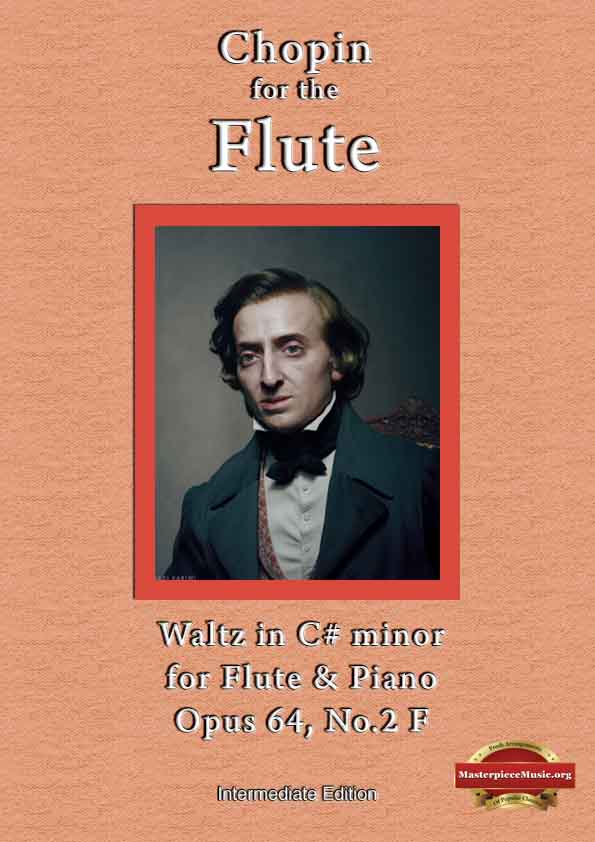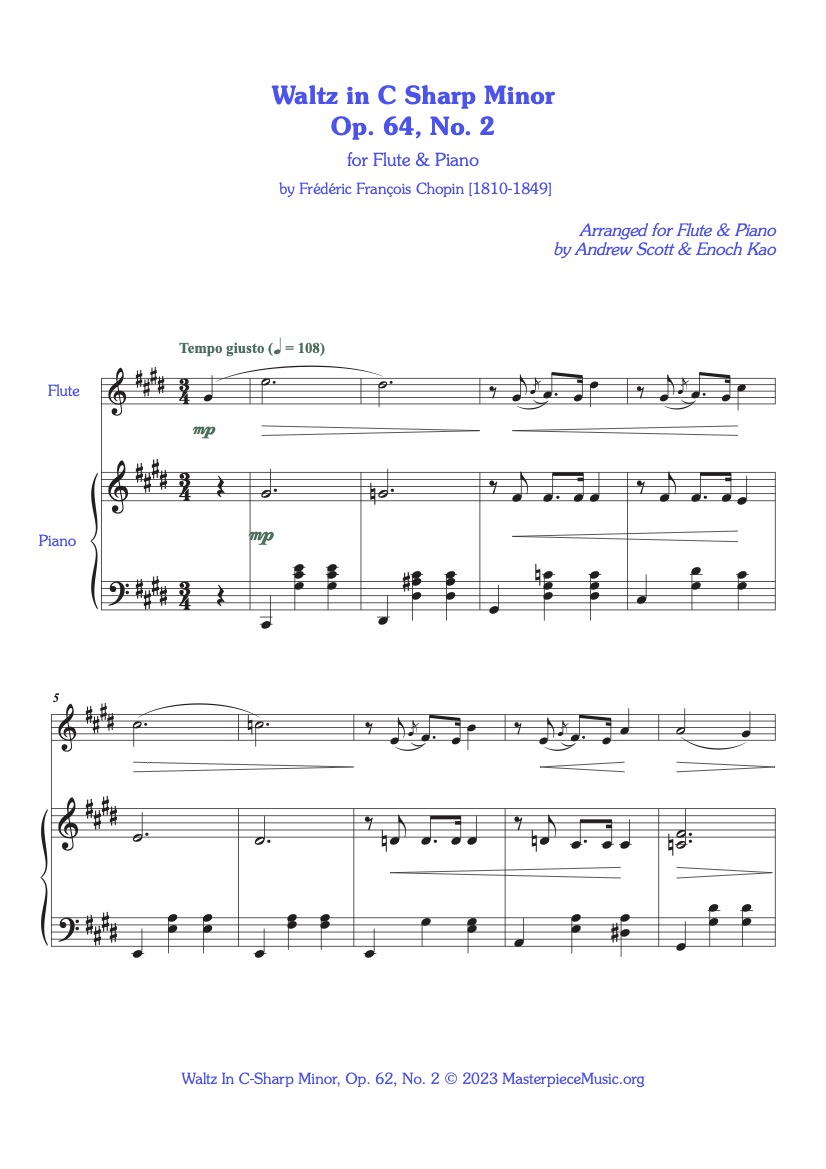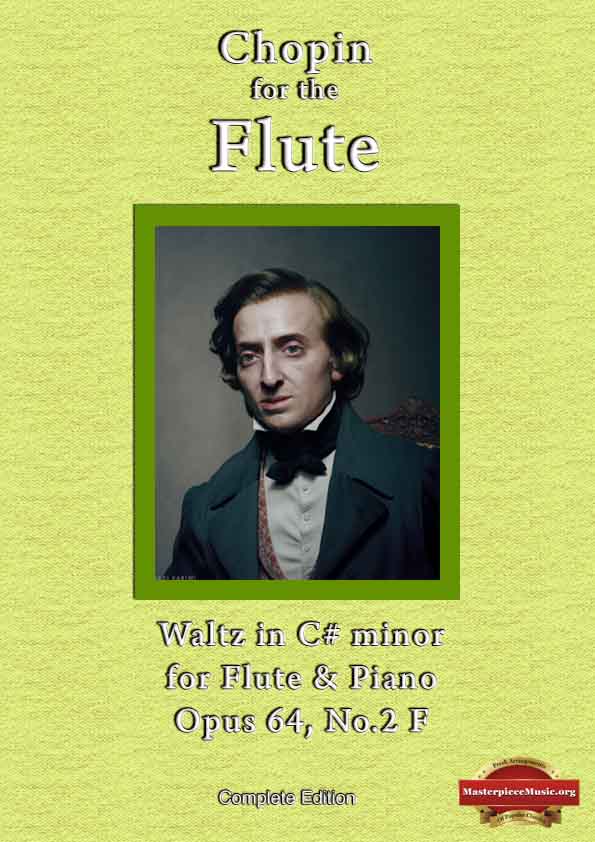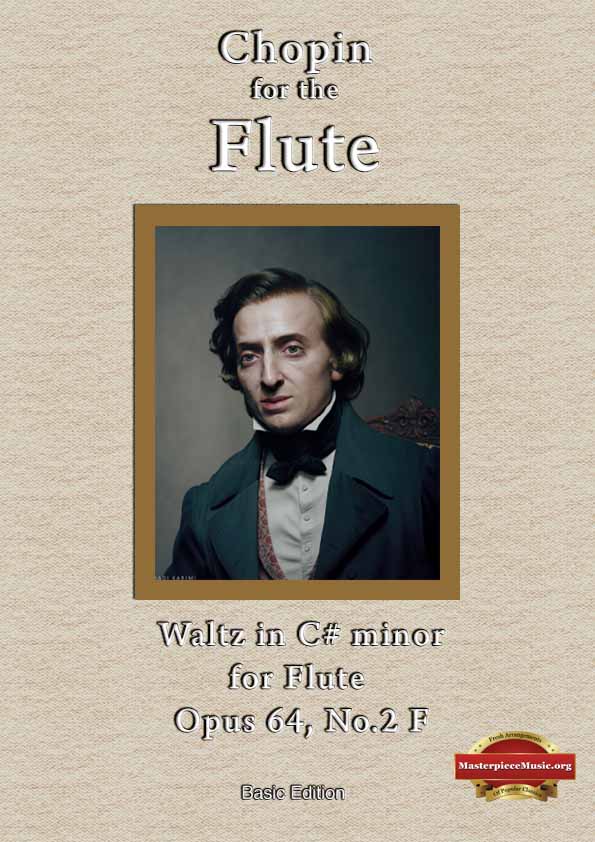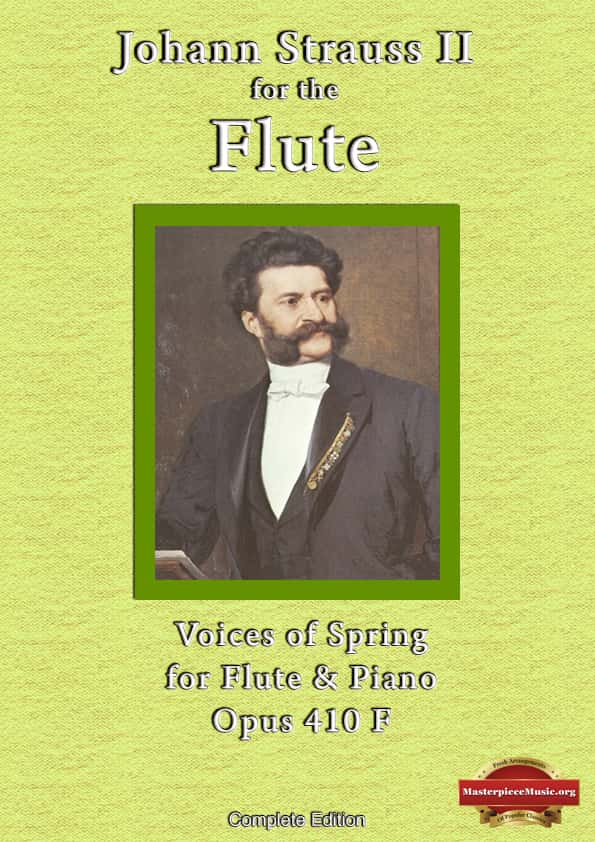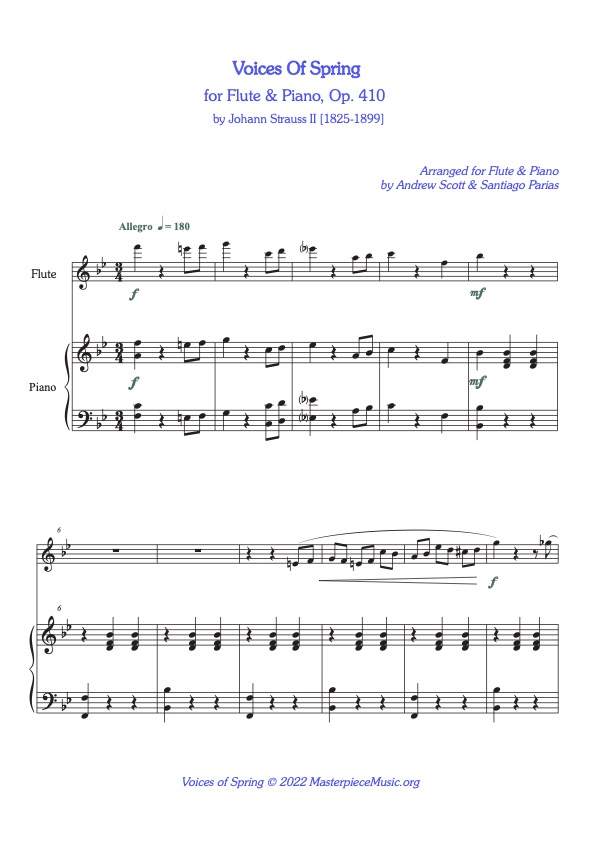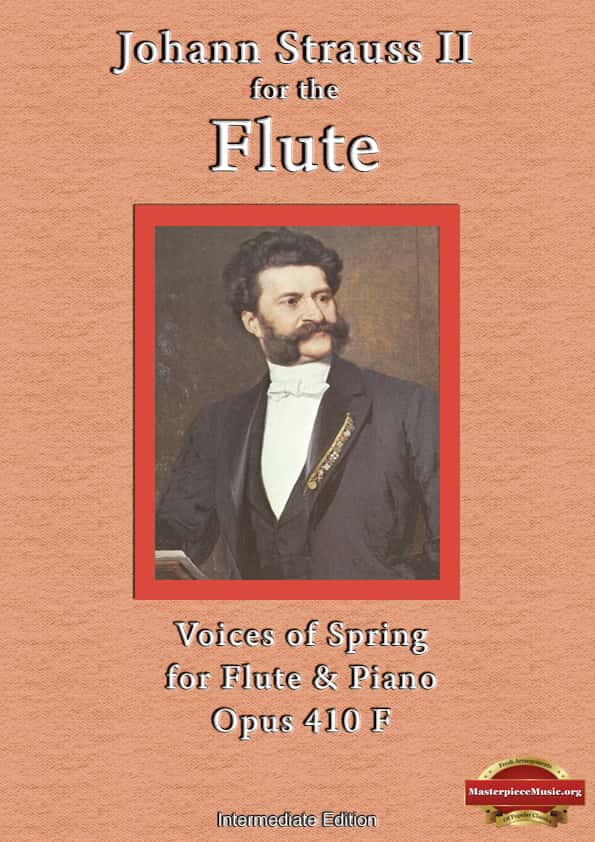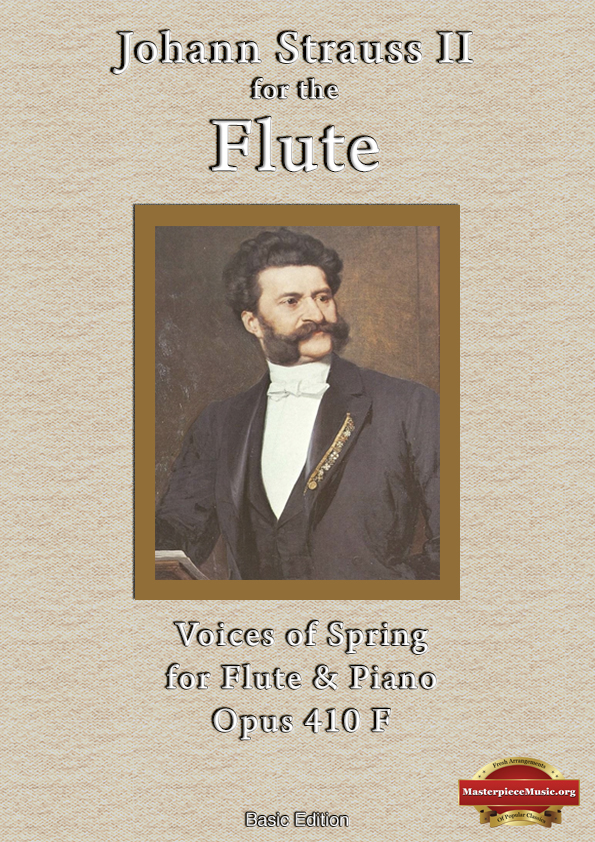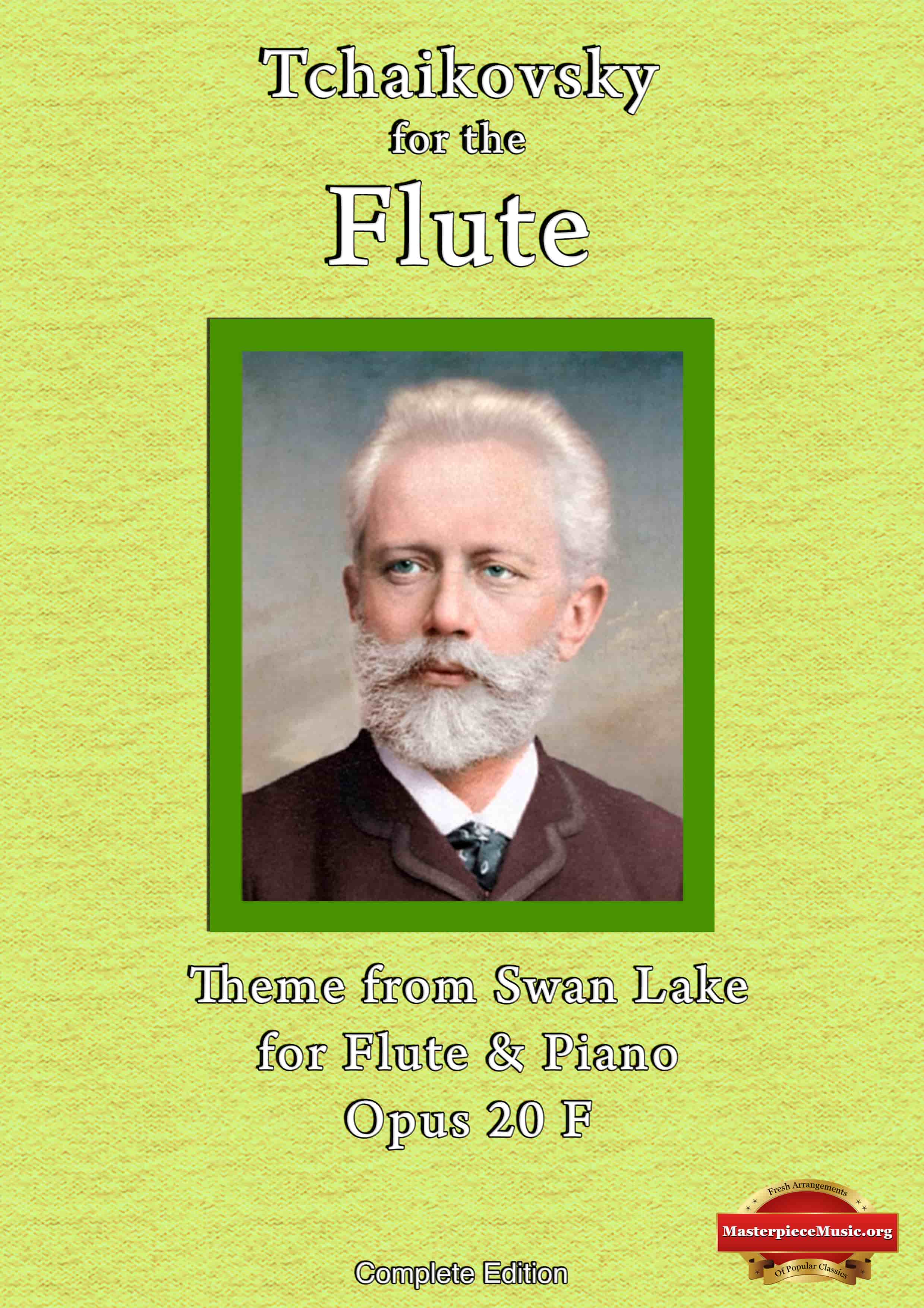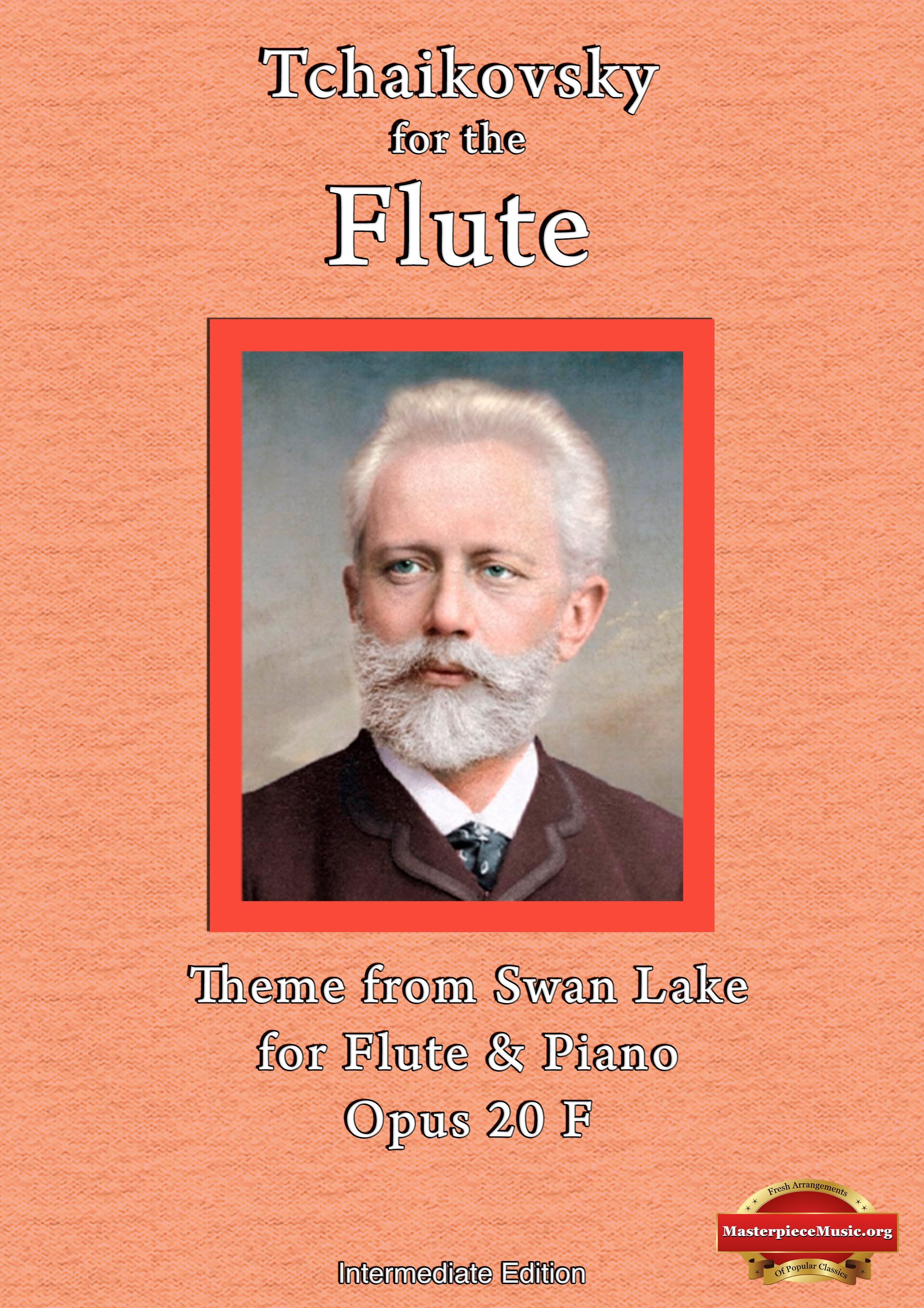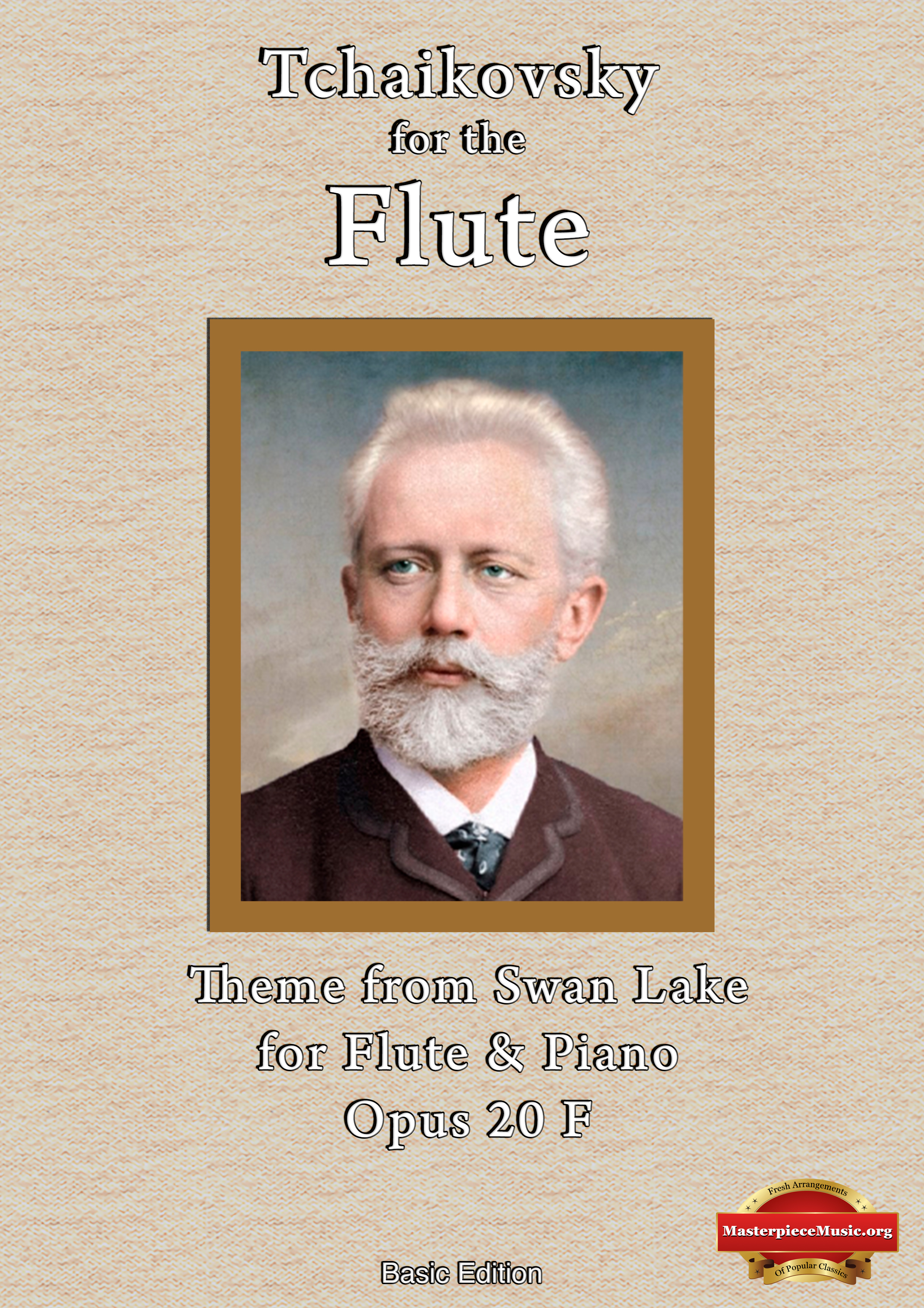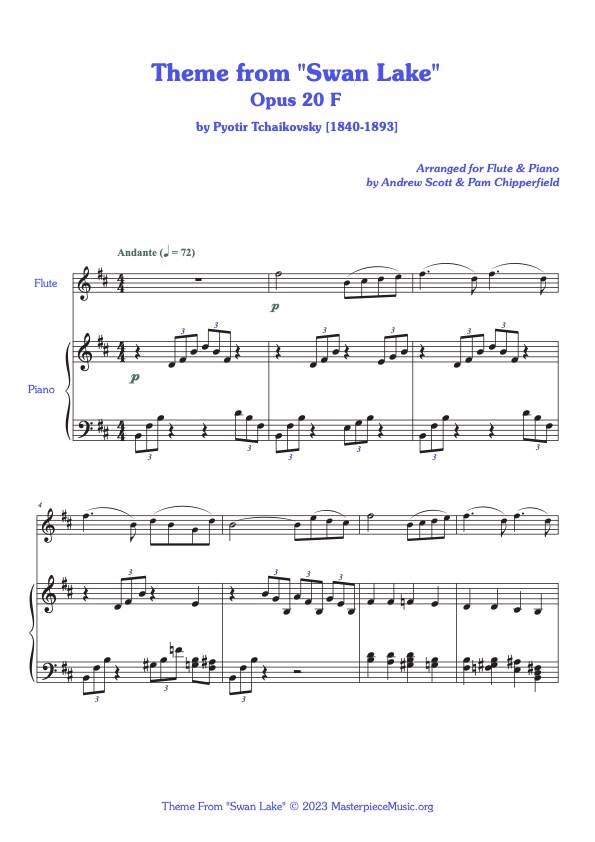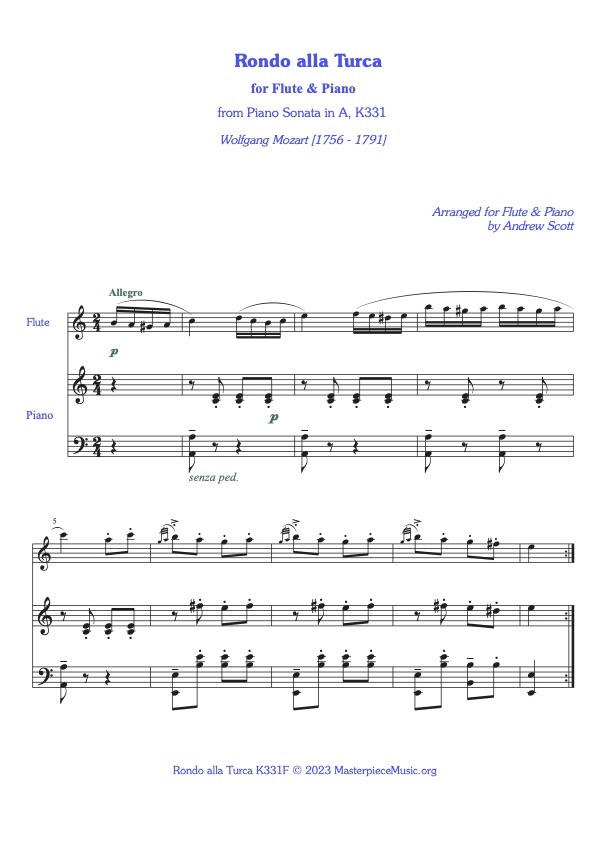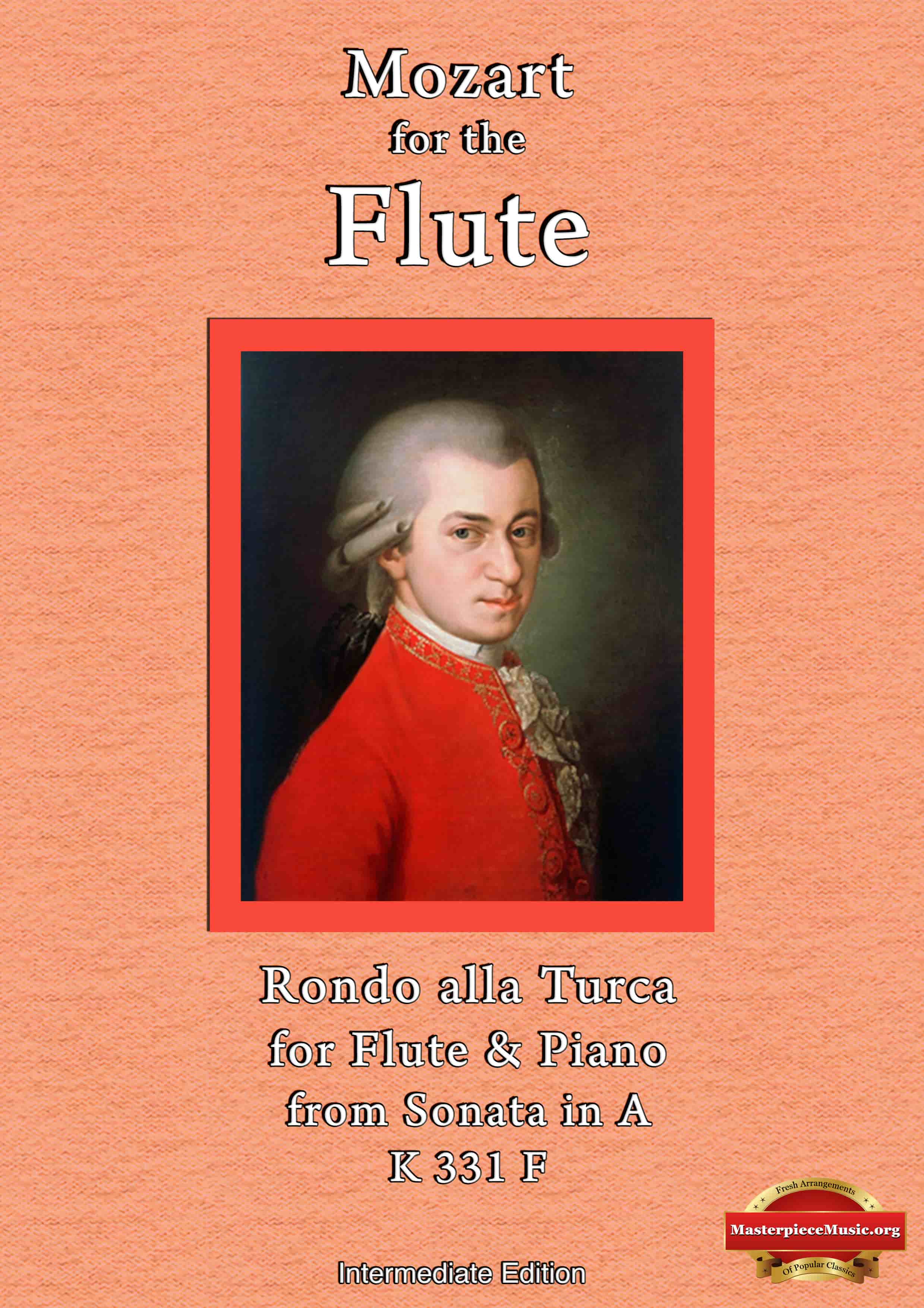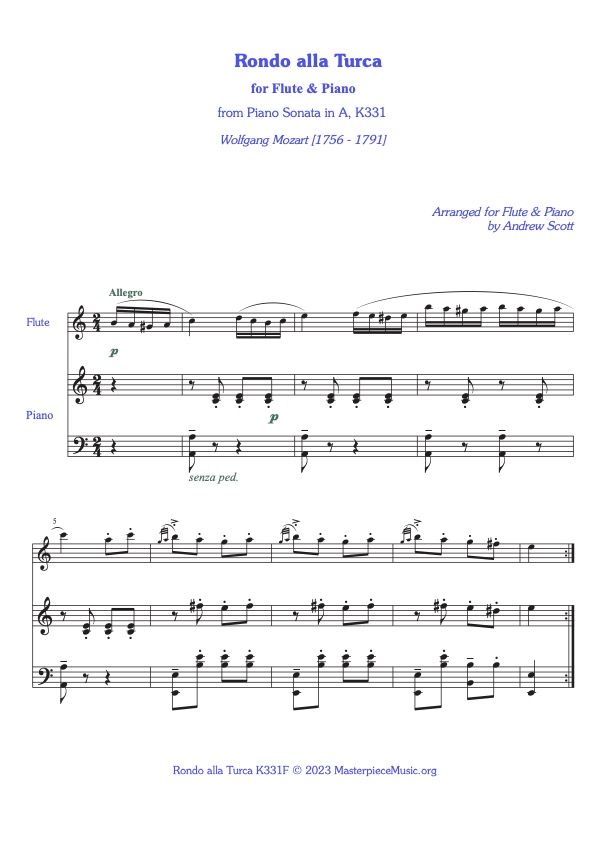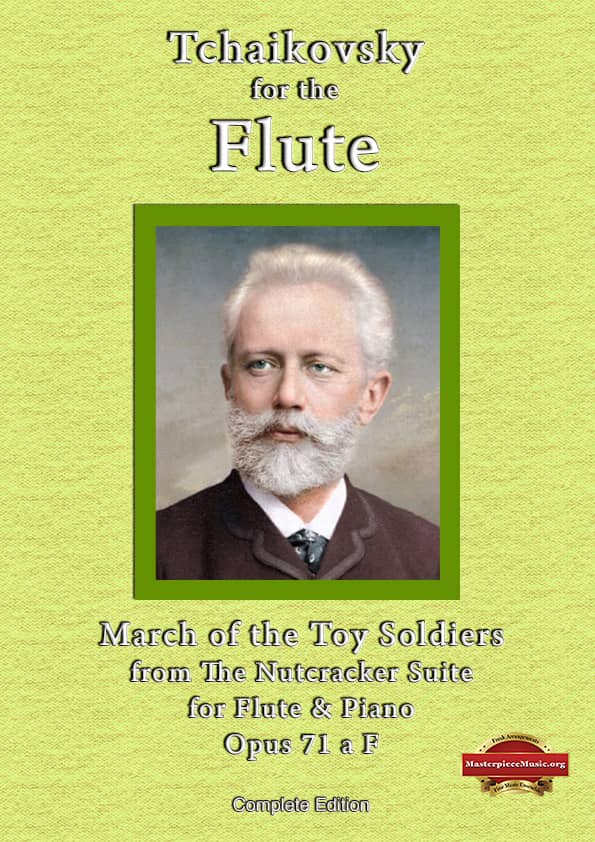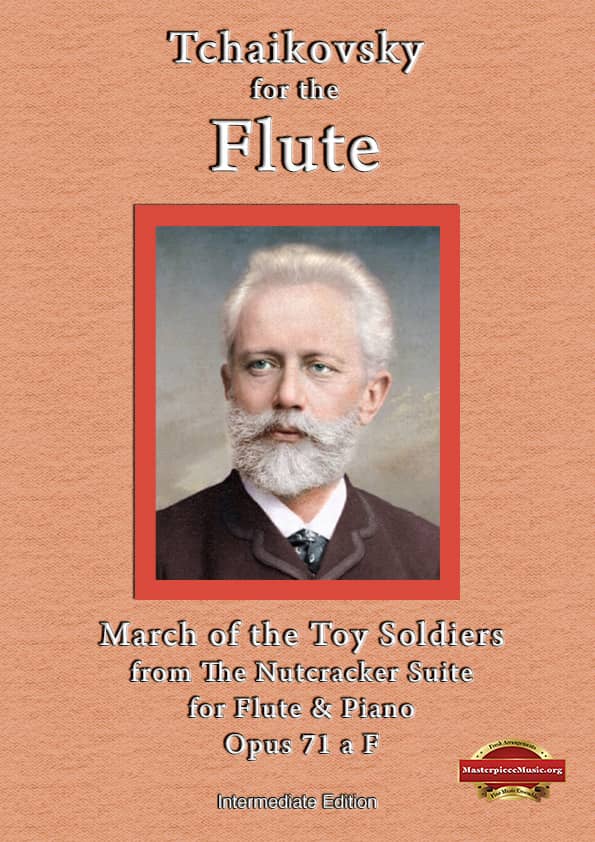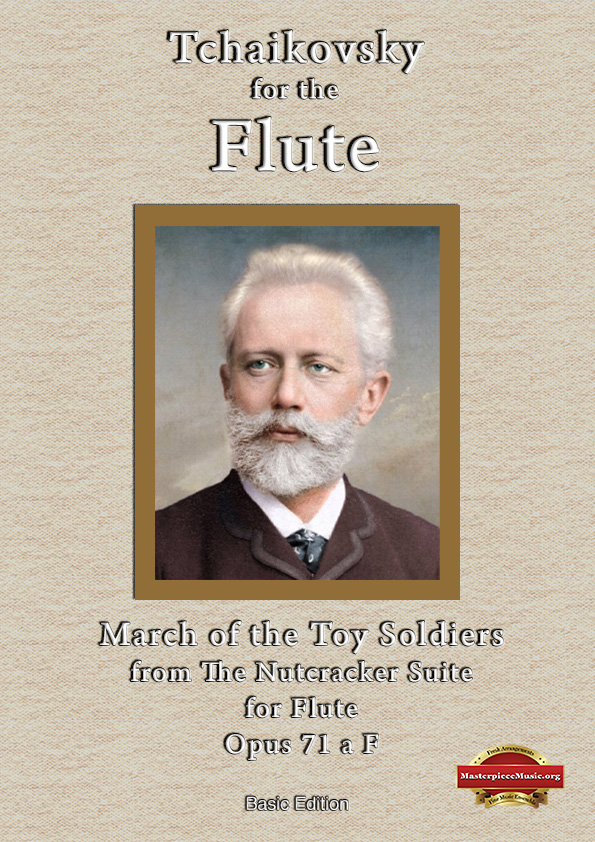Category: Sheet Music for Flute & Piano
Waltz in C#m- Frederic Chopin – Sheet Music for Flute and Piano – Intermediate Edition
What would one of
Chopin’s Most Famous
Compositions Sound like
on the Flute?
Waltz in C#m – Opus 64, No. 2
Sheet Music for Flute and Piano
Intermediate Edition
Click on the play button to hear

how this piece sounds.
Click to enlarge.
A True Masterpiece
Chopin’s “Waltz in C# minor” is a beautiful and expressive piece of music that was composed in the mid-19th century. It is one of Chopin’s many contributions to the Romantic era of classical music. Chopin was a master of the piano, and his music is full of emotion and nuance.
The waltz has a melancholic yet graceful melody that perfectly captures the romantic spirit. It is believed that Chopin composed the waltz during his time in Paris and dedicated it to his lover, the French writer George Sand. The piece reflects Chopin’s complex emotions and personal experiences.
The waltz was first performed in Paris and quickly became a staple of Chopin’s concert repertoire. It is one of his most popular pieces of music, and it has been transcribed for various instruments, including the flute.
Performances of Chopin’s “Waltz in C# minor” are appropriate for a variety of occasions, from formal concerts and recitals to intimate gatherings. The waltz’s emotive character allows flutists to convey the romantic essence of Chopin’s music.
Arranged for Flute & Piano
Although the piano has all the melody in the original composition, this attractive piece lends itself to expression on a flute.
Our arrangement adds a flute to the stage, thus ensuring that the beauty of Chopin’s music is accessible for flute players and their audiences
The flute has most of the melody; the piano provides rhythm and harmonic accompaniment all the way through, with smatterings of the melody here and there.
11 Pages
There are a total of 11 pages in this edition – the flute part is 2 pages, the piano part is 4 pages, the score is 5 pages.
This complete version contains the first 64 bars of the original composition, in the same key.
The playing time is a just under one and a half minutes.
What you get:
1. Three separate parts of the complete edition as a PDF download – one part each for the flute and piano, and a third containing the score (both instruments on the page. This can be useful if either the flutist or the pianist needs to see what the other is doing);
2. A recording of the whole piece so you can hear how it should sound;
3. A backing track with just the piano, at full tempo, so you can practise at home;
Click the button to hear
the piano backing.
4. A backing track at 80% tempo, so you can practise the more difficult passages at a slower speed.
Waltz in C#m- Frederic Chopin – Sheet Music for Flute and Piano – Complete Edition
Can a Flute Player’s
Repertoire
be Complete
without a
Showpiece from Chopin?
Waltz in C#m – Opus 64, No. 2
Sheet Music for Flute and Piano
Complete Edition
Click on the play button to hear

how this piece sounds.
Click to enlarge.
A True Masterpiece
Frederic Chopin’s “Waltz in C# minor,” part of his Opus 64 set, is a beautifully expressive piece for the piano.
Composed in the mid-19th century, this waltz is one of Chopin’s many contributions to the romantic era of classical music. Chopin wrote with a deep understanding of the piano’s capabilities, infusing his works with emotion and nuance.
The waltz’s melancholic yet graceful melody makes it a poignant expression of romantic sentiment. It’s believed that Chopin composed this waltz during his time in Paris and dedicated it to his beloved, the French writer George Sand. This piece reflects the composer’s complex emotions and personal experiences.
First performed in Paris, Chopin’s waltz became a staple of his concert repertoire. Its popularity grew as the romantic style gained prominence in Europe. While originally composed for piano, it has been transcribed for various instruments, including the flute.
Performances of Chopin’s “Waltz in C#minor” are fitting for formal concerts, recitals, and intimate gatherings. Its emotive character allows flutists to convey the romantic essence of Chopin’s music, making it suitable for diverse occasions where expressive and lyrical playing is desired.
Arranged for Flute & Piano
Although the piano has all the melody in the original composition, this attractive piece lends itself to expression on a flute.
Our arrangement adds a flute to the stage, thus ensuring that the beauty of Chopin’s music is accessible for flute players and their audiences
The flute has about 80% of the melody; the piano provides rhythm and harmonic accompaniment all the way through, with the melody given to it about 20% of the time.
19 Pages
There are a total of 19 pages in this edition – the flute part is 3 pages, the piano part is 7 pages, the score is 9 pages.
This complete version contains all 128 bars of the original composition, in the same key.
The playing time is just under 3 minutes.
What you get:
1. Three separate parts of the complete edition as a PDF download – one part each for the flute and piano, and a third containing the score (both instruments on the page. This can be useful if either the flutist or the pianist needs to see what the other is doing);
2. A recording of the whole piece so you can hear how it should sound;
3. A backing track with just the piano, at full tempo, so you can practise at home;
Click the button to hear
the piano backing.
4. A backing track at 80% tempo, so you can practise the more difficult passages at a slower speed.
Voices of Spring – Johann Strauss – Sheet Music for Flute and Piano – Complete Edition
Unleash the Magic
of Johann Strauss II’s
“Voices of Spring.”
Sheet Music for Flute and Piano
Complete Edition
Click on the play button to hear

how this piece sounds.
Click to enlarge.
A Flutist’s Dream Come True
Discover the enchanting allure of “Voices of Spring” with our “Complete Edition Sheet Music for Flute and Piano.”
The original full orchestra masterpiece by the renowned composer Johann Strauss II, has become a cherished favorite among audiences worldwide.
This exquisite arrangement offers you the chance to immerse yourself in the timeless melodies and graceful waltz rhythms that have stood the test of time.
Arranged for Flute & Piano
Experience the joy of playing the flute like never before.
Our meticulously notated “Voices of Spring” sheet music allows flute enthusiasts to relish every nuance of this iconic composition. The flute’s melodious voice intertwines seamlessly with the piano, creating a captivating synergy that transports listeners to the heart of a Viennese ballroom.
This complete edition unlocks the full potential of your flute, making it an indispensable addition to your repertoire.
Rekindle the romance of Strauss’s masterpiece and leave your audience spellbound with your performance.
The flute has about 80% of the melody; the piano provides rhythm and harmonic accompaniment all the way through, with the melody given to it about 20% of the time.
40 Pages
There are a total of 40 pages in this edition – the flute part is eight pages, the piano part is 12 pages, the score is 20 pages.
This complete version contains all 342 bars of the original composition, in the same key.
The playing time is a little over seven minutes.
What you get:
1. Three separate parts of the complete edition as a PDF download – one part each for the flute and piano, and a third containing the score (both instruments on the page. This can be useful if either the flutist or the pianist needs to see what the other is doing);
2. A recording of the whole piece so you can hear how it should sound;
3. A backing track with just the piano, at full tempo, so you can practise at home;
Click the button to hear
the piano backing.
4. A backing track at 80% tempo, so you can practise the more difficult passages at a slower speed.
Voices of Spring – Johann Strauss – Sheet Music for Flute and Piano – Intermediate Edition
Awaken the Enchantment
of Johann Strauss II’s
“Voices of Spring.”
Sheet Music for Flute and Piano
Intermediate Edition
Click on the play button to hear

how this piece sounds.
Click to enlarge.
A Flutist’s Fantasy Come True
Explore the captivating allure of “Voices of Spring” with our Intermediate edition.
Derived from Johann Strauss II’s renowned full orchestral masterpiece, this exquisite arrangement has earned its place as a beloved favorite worldwide.
Immerse yourself in the timeless melodies and graceful waltz rhythms that have endured through the ages.
Rediscover the joy of playing the flute like never before.
Our carefully transcribed “Voices of Spring” sheet music invites flute enthusiasts to savor every subtlety of this iconic composition. The flute’s melodious tones harmonize seamlessly with the piano, creating a mesmerizing synergy that transports listeners to the heart of a Viennese ballroom.
This comprehensive edition unlocks the full potential of your flute, making it an essential addition to your repertoire.
Rekindle the romance of Strauss’s masterpiece and captivate your audience with your performance.
The flute has about 80% of the melody; the piano provides rhythm and harmonic accompaniment all the way through, with the melody given to it about 20% of the time.
Seven Pages
There are a total of seven pages in this edition – the flute part is one page, the piano and score parts are three pages each.
This intermediate version contains the first 40 bars of the original composition, in the original key.
The playing time is a little under one and a half minutes.
What you get:
1. Three separate parts of the complete edition as a PDF download – one part each for the flute and piano, and a third containing the score (both instruments on the page. This can be useful if either the flutist or the pianist needs to see what the other is doing);
2. A recording of the whole piece so you can hear how it should sound;
3. A backing track with just the piano, at full tempo, so you can practise at home.
Click the button to hear
the piano backing.
Swan Lake Theme – Sheet Music for Flute and Piano – Complete Edition
Look Ma!
No Orchestra!
Swan Lake Theme
Sheet Music for Flute and Piano
Complete Edition
Click on the play button to hear

how this piece sounds.
Click to enlarge.
A True Masterpiece
Behold the wondrous transformation where the grandeur of an orchestra is distilled into the intimacy of a flute and piano duet!
The iconic “Swan Lake Theme,” a composition that has resonated through the annals of time is now sculpted for the delicate interplay of flute and piano.
This sheet music serves as your guide through this enchanting journey. The Complete Edition, a treasure trove for both flutists and pianists, offers a comprehensive view of the piece’s intricate tapestry. As your fingers grace the flute’s keys and dance across the piano’s ivory, you become the conductor of your own symphony, an orchestra unto yourself.
The resplendent melody of the “Swan Lake Theme” unfurls anew through the lens of the flute and piano. The flute takes on the mantle of the swan, its notes echoing with elegance and grace. Meanwhile, the piano’s harmonies envelop the melody, providing a rich backdrop that mirrors the orchestral landscape.
Through this collaboration, you breathe life into Tchaikovsky’s composition, infusing it with your individuality and interpretation. With every trill, every crescendo, and every heartfelt pause, you become the storyteller of a timeless narrative that traverses the realms of love, magic, and transformation.
The absence of an orchestra is not a limitation but an invitation to explore the essence of the piece in its purest form. The flute and piano partnership delves into the core emotions of the “Swan Lake Theme,” capturing the heartache, the yearning, and the beauty that define this iconic melody.
With the Complete Edition of the sheet music as your guide, you have the privilege of breathing new life into this beloved theme. As you embrace the harmony of the flute and piano, you paint an evocative picture, one that resonates with audiences just as deeply as the orchestral rendition.
So, as you embark on this musical adventure, remember that in the absence of an orchestra, there lies a universe of expression waiting to be unveiled. With your flute and piano in hand, you pay homage to the original while crafting a rendition uniquely your own, a heartfelt celebration of music’s enduring power.
The flute has about 80% of the melody; the piano provides rhythm and harmonic accompaniment all the way through, with the melody given to it about 20% of the time.
13 Pages
There are a total of 13 pages in this edition – the flute part is two pages, the piano part is five pages, the score is six pages.
This complete version contains all 70 bars of the original composition, in the same key.
The playing time is a little over three and a half minutes.
What you get:
1. Three separate parts of the complete edition as a PDF download – one part each for the flute and piano, and a third containing the score (both instruments on the page. This can be useful if either the flutist or the pianist needs to see what the other is doing);
2. A recording of the whole piece so you can hear how it should sound;
3. A backing track with just the piano, at full tempo, so you can practise at home;
Click the button to hear
the piano backing.
4. A backing track at 80% tempo, so you can practise the more difficult passages at a slower speed;
5. A backing track at 65% tempo, so you can practise the really difficult passages at a slower speed, for example bars 110-120.
Swan Lake Theme – Sheet Music for Flute and Piano – Intermediate Edition
Discover Flute Brilliance.
The Enchanting Theme
of Swan Lake
Awaits You!
Sheet Music for Flute and Piano
Intermediate Edition
Click on the play button to hear

how this piece sounds.
Click to enlarge.
A True Masterpiece
Immerse yourself in a realm of musical creativity, where the acclaimed Swan Lake theme by Tchaikovsky takes an enchanting turn. Envision a scenario where the vibrant essence of Swan Lake’s melody isn’t brought to life by a full orchestra, but meticulously crafted to harmonize the flute and piano in perfect partnership.
This captivating concept unfolds a world of possibilities that are poised to enthrall both musicians and audiences alike. In this captivating departure from convention, the heart and soul of Tchaikovsky’s composition resonate anew through the pages of this Intermediate Edition sheet music, tailored for flute and piano.
Each note, phrase, and subtle nuance within this iconic theme now stands as a blank canvas, awaiting the skilled touch of the flutist and the harmonious keystrokes of the pianist. Within the intimate dialogue of the flute and piano, the spirit of Swan Lake takes on fresh dimensions.
The dynamic passages and crescendos that were once exclusive to orchestral instruments now elegantly intertwine between the flute’s ethereal tones and the piano’s lush harmonies. The intricate rhythms and thematic transitions become the cornerstone of a captivating musical tale woven between these two instruments.
With a total of 41 pages, this innovative interpretation invites you to explore a harmonious synergy between flute and piano, redefining the charm of the Swan Lake theme.
The flute has about 80% of the melody; the piano provides rhythm and harmonic accompaniment all the way through, with the melody given to it about 20% of the time.
7 Pages
There are a total of 7 pages in this edition – the flute part is one page, the piano part and the score are three pages each.
This intermediate version contains the first 26 bars of the original composition, in the same key.
The playing time is about a minute and a half.
What you get:
1. Three separate parts of the complete edition as a PDF download – one part each for the flute and piano, and a third containing the score (both instruments on the page. This can be useful if either the flutist or the pianist needs to see what the other is doing);
2. A recording of the whole piece so you can hear how it should sound;
3. A backing track with just the piano, at full tempo, so you can practise at home;
Click the button to hear
the piano backing.
4. A backing track at 80% tempo, so you can practise the more difficult passages at a slower speed.
Rondo alla Turca – Mozart – Sheet Music for Flute and Piano – Complete Edition
Ready
to
Rondo?
Rondo alla Turca
Sheet Music for Flute and Piano
Complete Edition
Click on the play button to hear

how this piece sounds.
Click to enlarge.
A True Masterpiece
This catchy piece is one of the most popular compositions that Wolfgang Mozart ever wrote.
Part of a longer sonata he originally composed in 1783 for solo piano, this melody has not only survived for more than two centuries in the repertoire of classically trained pianists, but flourished in the hearts and minds of music lovers all over the world.
This arrangement for flute and piano makes available to flute players and audiences alike the opportunity to enjoy the sound of this fabulous composition in a different manner to that which Mozart intended.
Judging by the quality and quantity of works which his generous spirit created for the world, I am confident that Mozart would approve enthusiastically of our intention to appreciate his talent in a new way.
The flute has about 80% of the melody; the piano provides rhythm and harmonic accompaniment all the way through, with the melody given to it about 20% of the time.
26 Pages
There are a total of 26 pages in this edition – the flute part is 5 pages, the piano part is 9 pages, the score is 12 pages.
This complete version contains all 136 bars of the original composition, in the same key.
You will be able to play the main theme and the first two variations.
The playing time is 3 minutes 45 seconds.
What you get:
1. Three separate parts of the complete edition as a PDF download – one part each for the flute and piano, and a third containing the score (both instruments on the page. This can be useful if either the flutist or the pianist needs to see what the other is doing);
2. A recording of the whole piece so you can hear how it should sound;
3. A backing track with just the piano, at full tempo, so you can practise at home;
Click the button to hear
the piano backing.
4. A backing track at 80% tempo, so you can practise the more difficult passages at a slower speed.
Rondo alla Turca – Mozart – Sheet Music for Flute and Piano – Intermediate Edition
If only Mozart
had composed
more music
for the flute!
Wish granted!
Rondo alla Turca
Sheet Music for Flute and Piano
Intermediate Edition
Click on the play button to hear

how this piece sounds.
Click to enlarge.
A True Masterpiece
This captivating composition stands as one of Wolfgang Mozart’s most renowned pieces.
Originally a part of a longer sonata crafted in 1783 for solo piano, this captivating melody has not only persevered over two centuries in the repertoires of classically trained pianists but has also thrived in the hearts of music enthusiasts worldwide.
The arrangement for flute and piano offers both flutists and audiences a fresh opportunity to relish the splendor of this remarkable piece in a manner divergent from Mozart’s initial vision.
Considering the abundance of high-quality works that Mozart’s creative spirit bestowed upon the world, I hold the belief that he would wholeheartedly embrace our endeavor to honor his genius through this innovative interpretation.
The flute has about 80% of the melody; the piano provides rhythm and harmonic accompaniment all the way through, with the melody given to it about 20% of the time.
14 Pages
There are a total of 14 pages in this edition – the flute part is 3 pages, the piano part is 5 pages, the score is 6 pages.
This intermediate version contains the first 70 bars of the original composition, in the same key.
The playing time is two minutes 44 seconds.
What you get:
1. Three separate parts of the complete edition as a PDF download – one part each for the flute and piano, and a third containing the score (both instruments on the page. This can be useful if either the flutist or the pianist needs to see what the other is doing);
2. A recording of the whole piece so you can hear how it should sound;
3. A backing track with just the piano, at full tempo, so you can practise at home;
Click the button to hear
the piano backing.
4. A backing track at 80% tempo, so you can practise the more difficult passages at a slower speed.
March of the Toy Soldiers – Sheet Music for Flute and Piano – Complete Edition
How Can I
Get to Play
All the Best Bits
on my Flute?
March of the Toy Soldiers
Sheet Music for Flute and Piano
Complete Edition
Click on the play button to hear

how this piece sounds.
Click to enlarge.
A True Masterpiece
“March of the Toy Soldiers” is a captivating composition found in Pyotr Ilyich Tchaikovsky’s timeless ballet, “The Nutcracker.”
Crafted in 1892, this piece embodies the enchanting holiday spirit and holds a distinctive place in classical music history.
When arranged for flute and piano, it takes on a unique and delightful character that highlights the strengths of these instruments.
This arrangement of “March of the Toy Soldiers” retains its lively and playful essence while adapting to the capabilities of the flute and piano. The flute takes the lead, evoking a sense of innocence and whimsy, reminiscent of childhood fantasies.
The piano accompaniment complements the flute’s melody with rhythmic precision, mimicking the marching cadence of toy soldiers. It provides a rich harmonic foundation and showcases the fullness of the original orchestration.
The arrangement for flute and piano enables a more intimate and chamber music-like performance, allowing the nuances of each instrument to shine. The flute’s clear and airy tones blend harmoniously with the piano’s resonant chords, creating a balanced and charming rendition.
Due to the agility and expressive capabilities of the flute, the arrangement allows for embellishments and variations, enhancing the overall musical experience.
The flute has about 80% of the melody; the piano provides rhythm and harmonic accompaniment all the way through, with the melody given to it about 20% of the time.
21 Pages
There are a total of 21 pages in this edition – the flute part is 3 pages, the piano part is 8 pages, the score is 10 pages.
This complete version contains all 88 bars of the original composition, in the same key.
The playing time is about two and a half minutes.
What you get:
1. Three separate parts of the complete edition as a PDF download – one part each for the flute and piano, and a third containing the score (both instruments on the page. This can be useful if either the flutist or the pianist needs to see what the other is doing);
2. A recording of the whole piece so you can hear how it should sound;
3. A backing track with just the piano, at full tempo, so you can practise at home;
Click the button to hear
the piano backing.
4. A backing track at 80% tempo, so you can practise the more difficult passages at a slower speed.
